Succeeded in making GGSA the authoritative representative for California salmon, salmon fishermen, both sport and commercial, and related businesses in the press. See summary of 2016 press highlights here.
Succeeded in getting four major salmon rebuilding projects adopted for implementation and funded by the USFWS and Bureau of Reclamation through the CVP Restoration Fund
The projects include:
D.6 Reduce or eliminate night lights on the Sacramento
The restoration fund has allocated $183,000 for two years to identify the worst night lights on the river as a first step towards bringing them under control. Baby salmon migrate at night but will stop in their tracks when they swim into lit spots. Predator fish have figured this out and ambush them from the shadows the minute the baby salmon swim into the lights. Answer: dim the lights! Part of the funding may be used to establish a lighting threshold or standard safe to salmon, another part to map where the brightest lights are.
D.15 Re-create shallow water habitat in Delta
$1.5 million over three years. There’s widespread agreement that much of the once good rearing habitat in the Delta for baby salmon has been destroyed by human development. The good news; some of it can be restored. If it is, survival of baby salmon is expected to improve. The baby salmon like shallow water habitat with natural vegetation. Instead what they’ve got is mostly deep water channels lined with giant construction boulders.
C.1 Natural and artificial velocity and predator refuge structures
$381,600 over 5 years. Baby salmon in the upper Sacramento River lack good places to safely tuck away from predator fish and out of the extreme currents in the middle of the river. Gone are the natural side channels that were once everywhere. This project proposes anchoring massive tree root structures at key points in the river. The baby fish find safety in the root maze where predators can’t get at them. At the same time they catch a break from heaving mid-stream currents in the back eddies created by the trunks.
D.14 Feather Breached Levees
$386,900 over two years. GGSA is out to undo some of the worst Delta predator hot spots. That’s because they’re death traps for baby salmon. We’re talking about levee breaches where subsequent flood water and tidal see sawing over years have cut deep holes that predator fish use to ambush baby salmon, in high numbers. Our proposal is to modify the bottom by feathering the edges of the holes or maybe filling them to take away the advantage predator fish currently have
C.2 Restore Rearing and Spawning Side Channels in the Upper Sacramento and Feather Rivers
Succeeded in getting the state of California Dept. of Fish and Wildlife to publicly support 13 side channel restoration projects being undertaken by the federal Bureau of Reclamation in the upper Sacramento River. This support has greatly sped up permitting and cleared other regulatory roadblocks.
Succeeded in getting state to establish first ever hatchery release protocols after repeated calls from GGSA to improve release strategies. GGSA continues to work with State to refine and improve these to increase survival. Although this action is not part of the Salmon Rebuilding Plan, its value and contribution to the fishery has become very apparent in recent years.
Succeeded in applying to state to truck and release some hatchery fish at Bodega Bay (though state has yet to respond to the request).
D.5, Extend the Yolo Bypass Flooding Period
The first-ever on the ground actions to improve the Yolo Bypass in history followed PR action by GGSA.
B.8 Water Temp. and Flow Improvements in the Feather River.
Succeeded in elevating need for salmon improvements on the Feather River to the highest levels of the National Marine Fisheries Service. (Eileen Sobeck, Assistant Administrator for Fisheries, National Marine Fisheries Service, Barry Thom, West Coast NMFS Regional Administrator, Maria Rea, Assistant West Coast NMFS Regional Administrator, and others have all heard about it now. Prior to GGSA action, only Rea was aware of the situation.)
B.9 Water Temp. and Pulse Flow Improvements in the Upper Sacramento
Elevated the case that water operations for winter run were routinely violated by Bureau of Reclamation operations in 2014 and 2015. This provided NMFS fish managers with a stronger political hand to successfully force reforms in 2016 resulting in greater winter run production and survival.
B.11 Smooth Keswick Releases from Sept. – Nov to Eliminate Stranding Redds (salmon nests)
Dewatering of fall run redds has been reduced because of GGSA focus and pressure on water managers. Before GGSA’s attention to this, redd dewatering was fairly routine with no political cost to the offenders. The outcome will be: higher success for spawning native salmon and this is
Brought a lawsuit with other groups challenging the approval of genetically modified salmon by the federal Food and Drug Administration
